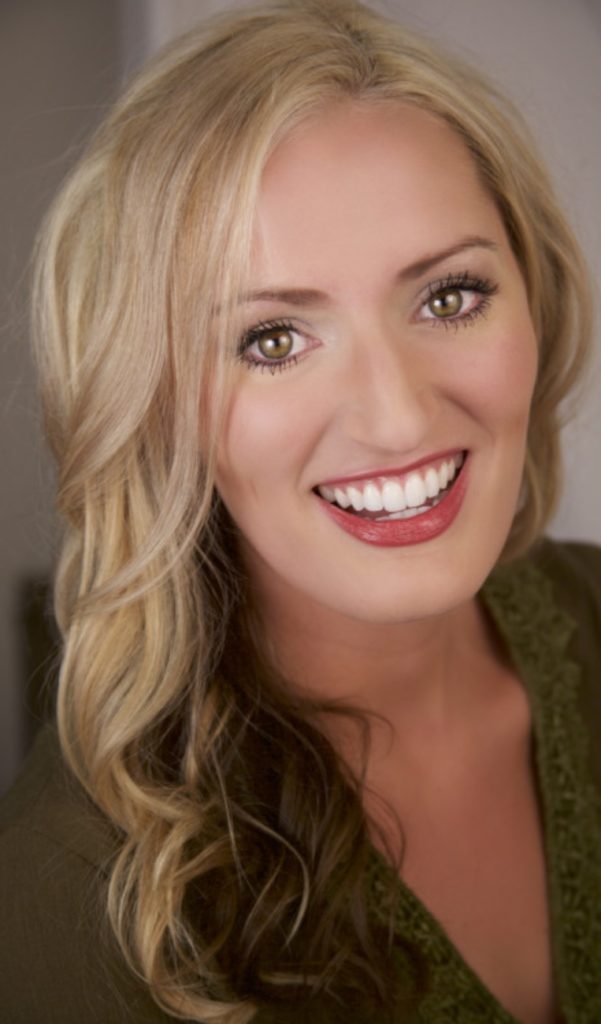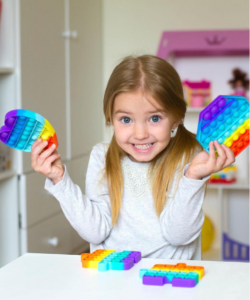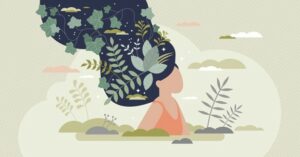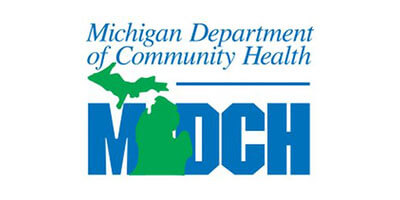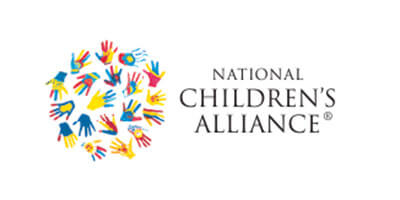A Survivor’s Story: Jenna Quinn
At the Child Advocacy Center of Lapeer County, we are continuously working to eradicate child abuse from our Community. This week, we would like to spotlight a child abuse survivor, author, and speaker on the role she has played in propelling child abuse prevention forward.

Jenna Quinn is a child sexual abuse survivor, author, TED speaker, and the namesake of Jenna’s Law. In 2009, Jenna’s Law was the first comprehensive child sexual abuse prevention education law that passed in the U.S named after a survivor. It requires that each school district adopt and implement a prevention policy that educates students, teachers, and parents on how to prevent, recognize, and report child sexual abuse. Now, over half the country has passed prevention legislation since Jenna’s Law. With a Masters Degree in Communications, she is a sought-after speaker who has traveled nationwide, educating and sharing her inspiring story with legislatures, law-enforcement, abuse-prevention groups, schools, communities of faith, nonprofit organizations, and the general public for over twelve years. As a survivor who benefited from the services of the Children’s Advocacy Center, Jenna has worked with centers all across the country and educated communities about the CAC’s important work. She is the National Spokesperson for Childhelp Speak Up Be Safe and has participated in both local and national radio, television, and news programs, dedicating her life to preventing child sexual abuse through education and legislation. www.JennaQuinn.org
Here is her story:
The day after Christmas, when I was sixteen years old, I answered a simple but profound question from my older sister. “Has anyone ever hurt you?” she asked. Being sexually abused throughout my tween and teen years by an adult who had the trusted roles of both honorary family and coach, created a vortex of hopelessness. I felt powerless to escape. My innocence was stolen, my spirit and very will to live assassinated, and my life essentially destroyed. The effects of how I viewed myself and the damage to my relationships with others was impossible to hide or ignore. I built walls of self-protection that felt impenetrable.
By the age of sixteen years old I had completely changed from the young girl I once was—vibrant, joyful, and loving. I was suicidal, depressed, anxious, withdrawn, and suffered from insomnia and night terrors. Yet no one could figure out what was wrong with me. The adults and students around me were puzzled at my sudden downward spiral. “What’s wrong with Jenna?!” The adults and students around me were not educated about the changes in behavior and likely warning signs of sexual abuse. My Mom even took me to several family doctors to find a physiological reason for why I had changed so much. With my hair falling out and low energy, they tested me for anemia and tested my thyroid. However, the doctors didn’t diagnose me with anything. I was healthy. Twice I even went to the emergency room after two separate incidents of sexual assault. And after running tests for allergies, I wasn’t allergic to anything. So the doctors concluded that stress might have caused my hives outbreak. How could I tell my best friend their father was a monster? How could I tell when threats from the perpetrator would follow?
The simple question my sister asked, “Has anyone ever hurt you?” resonated with me immediately. It’s such a general question. There are many ways one can be hurt by someone. I gave her an answer without saying a word. Tears ran down my cheeks as I lost it right there at the restaurant where my sister and I were having lunch.
Finally, after catching my breath I told her who had hurt me. The most important aspect of my disclosure to her was her reaction. Her reaction would determine the coarse of my fate. She believed me. She offered her full support as I told Mom and Dad. That same evening we called the police and two police officers came to our home.
Along with the formal diagnosis of PTSD, I also received diagnoses of depression, anxiety, insomnia, and suicidal ideation. I’ve learned that the road from trauma to growth is hardly a straight line and it’s not a simple process, but the onset, the beginning of that journey, can be simple. I found it ironic, that what was used as a weapon against me, was also what healed me—relationship and connection to others. When I was too weak to fight for myself I had an army of support to both rally around me and fight for me. The unwavering support of the Children’s Advocacy Center consistently and compassionately answered those questions for me that so many survivors struggle with “Who am I? What is my value? What is my worth? Am I really worth all this effort?” That support is what made me believe my life was actually worthy of living. I had counselors who believed in me when I didn’t believe in myself. As I slowly started to believe in the work they put into me, to believe that I was deserving of the support they gave me, I started to appreciate my own life again. The support from The Children’s Advocacy Center made all the difference in the world to my family and I. Not only did I receive one on one counseling, but I also received group counseling. When we were preparing to go to trial the CAC also provided me with court preparation. I am so grateful to the Children’s Advocacy Center because I don’t know where I would be without them.
Then, through counseling, I began to find my voice and I discovered a new love for self-expression. Talking and writing about my feelings helped me understand myself and create meaning out of the trauma I had experienced. My personal strength slowly grew through my search to understand and find meaning in what happened—my ability to share my story, to tell it in my own way, in my own words, and eventually use it to create change. A defining moment of personal strength for me was when I testified in court against my perpetrator. Although I was on the stand for over three hours, I felt braver and stronger for having faced him.
After the trial though, I had another cross-roads in my journey. I wasn’t just struggling with my own PTSD symptoms, but with the impact of my abuse and the trial on both my family and the perpetrator’s family. And at that juncture, I had a decision to make. Like so many others, what had happened to me had challenged not just my perceptions of myself, but made me question my faith. Another damaged relationship. The God I had known before had become the God I didn’t understand. The perpetrator came into my life through the private Christian School I attended. The same feelings and thoughts, those same walls of self-protection that had separated me from my family and friends had separated me from my faith. So, I knew I had a choice to make. I could continue my current damaged belief system, or I could go back to the roots of that relationship and rediscover my faith. And as I sought the source to turn my sorrows into joy I hung onto the belief that God would bring reason from what I had gone through, restore my life, and help me use my pain to help others.
My renewed belief system put me on a clear path to help prevent other children from experiencing the trauma I went through. As I gave interviews to raise awareness and participated in an internship at the CAC it became obvious to me that the society we live in was starving for education, the very foundation of prevention. That realization changed the trajectory of my life and led to my work as an advocate. Out of my Mom’s experience as an educator (who was not taught the warning signs) and my own experience as a student (never having the chance to tell) the idea for Jenna’s Law was born. In my home state of Texas we passed Jenna’s Law in 2009 requiring prevention education for pre-K-12th grade students and teachers throughout our school system— a statute that was the first of it’s kind. Now, since 2009, over 30 states have duplicated portions of Jenna’s Law. While working on the legislation I became a national speaker, author, and educator to prevent child sexual abuse and trafficking. And as I travel the country, I know my life would have been different if the abuse had never happened. But I can’t regret that out of my own horrible experiences I am able to expose the evil of sexual abuse and find such joy in helping others.
I am not ashamed to say that I am 1 out of the estimated 1 in 3 girls that is sexually abused before the age of eighteen. I know that I am not alone. In our country it’s estimated that there are over 42 million survivors of child sexual abuse. And over 90% of the time a child is abused by someone they know and trust. Perpetrators use this pre-existing relationship as a deposit for the child’s silence. It’s easier to tell on a stranger than it is a family member or coach. We need to teach children it’s OK to tell, especially since it’s estimated that 2/3 of children will never tell. I know all too well that what’s kept in secret has power over you. In silence, shame is allowed to grow. And silence and shame are the enemies weapon of choice. This is why we can’t heal what we don’t reveal.
Naturally, there is always a certain level of hopelessness and denial around these numbers, however, please be encouraged. This is where we arrive at my favorite piece of data in the field of child sexual abuse.
The Center for Disease Control has stated that this crime is preventable! It’s estimated that 95% of child sexual abuse is preventable through education. When children and adults are educated about the crime, safety strategies on how to prevent, and taught who is safe to tell, and how to report, a victimized child is more likely to get the help they need. My hope to get prevention education into all communities is a direct result from my experience as a survivor. It only takes moments to empower a child’s voice, but it can takes years, or even a lifetime for them to get their voice back. We cannot choose the route of personal comfort or self-protection over the responsibility of providing a safe environment for children. There is hope that inherently lies within the horrific crime of child sexual abuse if we are willing to take the necessary steps to prevent, acknowledge, and address the issue.
With limited space for writing about the importance of child sexual abuse prevention, more questions are answered and resources provided in my new book, Pure In Heart: A Memoir of Overcoming Abuse and Passing Jenna’s Law, available on Amazon: https://www.amazon.com/Pure-Heart-Memoir-Overcoming-Passing/dp/069273872X/ref=sr_1_2?ie=UTF8&qid=1504218007&sr=8-2&keywords=pure+in+heart
Want to look at prevention resources but don’t know where to start? Childhelp Speak Up Be Safe is a research-based program for pre-K-12th grade. Childhelp Speak Up Be Safe helps children and teens learn the skills to prevent or interrupt cycles of neglect, bullying, and child abuse—physical, emotional, and sexual. The program uses an ecological approach to prevention education by providing materials to engage parents and caregivers, teachers, school administrators, and community stakeholders. Learn more: https://www.childhelp.org/subs/childhelp-speak-up-be-safe/
CAC Lapeer would like to thank Jenna for her transparency, strength, and desire to make a difference. Your story is an inspiration to all of us at the Advocacy Center. We are honored to partner with you as you continue on your journey inspiring others.
How you can help in our Community:
The Child Advocacy Center of Lapeer County has three certified facilitators of Darkness to Light’s Stewards of Children Training, a training built to raise awareness of the prevalence and consequences of child sexual abuse by educating adults about the steps they can take to prevent, recognize, and react responsibly to child sexual abuse. If you know of an individual or organization interested in this training, please contact us at admin@caclapeer.org.

